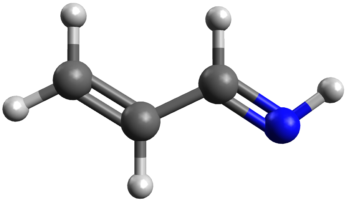Allylimine, Trans-anti isomer
 | |
|---|---|
| Species tag | 055520 |
| Version | 1* |
| Date of Entry | Oct. 2023 |
| Contributor | L. Bizzocchi M. Melosso S. Thorwirth H. S. P. Müller |
|
The experimental data have been summarized in | |
| Lines Listed | 13438 |
| Frequency / GHz | < 750 |
| Max. J | 120 |
| log STR0 | -9.0 |
| log STR1 | -8.5 |
| Isotope Corr. | |
| Egy / cm–1 | 0.0 |
| µa / D | 1.13 |
| µb / D | 1.66 |
| µc / D | |
| A / MHz | 45773.645 |
| B / MHz | 4560.931 |
| C / MHz | 4148.249 |
| Q(1000.0) | 545598.5486 |
| Q(500.0) | 192538.4042 |
| Q(300.0) | 89422.7116 |
| Q(225.0) | 58069.2672 |
| Q(150.0) | 31604.4467 |
| Q(75.00) | 11175.5830 |
| Q(37.50) | 3954.0966 |
| Q(18.75) | 1400.3646 |
| Q(9.375) | 496.8482 |
| Q(5.000) | 194.7261 |
| Q(2.725) | 79.2304 |
| detected in ISM/CSM | tentatively |